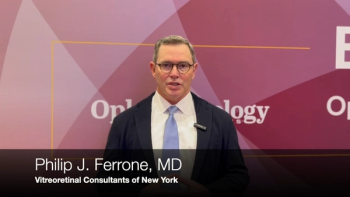
Anti-inflammatory treatment protocol for recurrent erosions after corneal refractive surgery
Ella Faktorovich, MD, sat with Ophthalmology Times to discuss an anti-inflammatory treatment protocol she has been using to treat recurrent erosions after corneal refractive surgery.
Ella Faktorovich, MD, sat with Ophthalmology Times to discuss an anti-inflammatory treatment protocol she has been using to treat recurrent erosions after corneal refractive surgery.
Video Transcript:
David Hutton:
I'm David Hutton of Ophthalmology Times. Joining me today is Dr. Ella Faktorovich, from Pacific Vision Institute in San Francisco, California, Dr. Faktorovich has been using an anti-inflammatory treatment protocol that has shown significant promise as the first line treatment for recurrent erosions after corneal refractive surgery. Thank you so much for joining us today. First, let's talk about the anti-inflammatory treatment, which is particularly effective for patients with underlying conditions such as rosacea.
Ella Faktorovich, MD:
Yes, thank you for having me, it's a pleasure to be speaking with you about this very important topic. So a small percentage of patients who had PRK specifically may experience symptoms of recurrent erosion. These typically get better and go away within the first 3-6 months after the procedure. But a small percentage of patients still may have some symptoms. And that can be especially frustrating because they often have fantastic vision. And if they have symptoms of recurring erosion, tearing, light sensitivity, etc., in the morning, that may preclude them from experiencing their fantastic vision outcome and enjoy it. So typically, we would treat these patients with artificial tears, you know, nighttime gels, and in the past, we've used hypertonic saline and ointment to treat them as well. And in most patients, these symptoms would resolve. But still, there would be a small percentage of patients that despite these treatments, these kind of standard treatments, the symptoms would persist. We found the hypertonic saline and ointment to be especially unhelpful in patients. And in fact, in some patients quite irritating. And that stopped them from using these methods consistently. So we started looking into alternative methods of treating patients with recurrent erosions other than the traditional hypertonics and artificial tears and night time gels. And there are a few reports published where anti-inflammatory protocol involving fluorometholone drops, and doxycycline orally, helped patients with their symptoms and helped resolution of recurring erosions in patients who have epithelial basement membrane dystrophy. So these were not patients post PRK they were patients who had EBMD and the anti-inflammatory protocol combining topical fluorometholone drops, and doxycycline has been used to treat them successfully. So we decided to explore that anti-inflammatory approach in patients who have had previous refractive surgery and treat the patients with that.
David Hutton:
What are the specific indicators that suggest the patient will respond well to this treatment protocol?
Ella Faktorovich, MD:
Well, in the past 2 years, we had 6 patients, 5 of whom had PRK, and 1 of whom had LASIK that had signs and symptoms of recurrent erosions 6 months after their procedure. The patients have been tried on our standard treatments of artificial tears, nighttime gels and hypertonics and had no response. And what actually prompted us to consider the anti-inflammatory approach to these patients is the very first patient I've had, who had this kind of unresponsive type of process is the fact that she had rosacea. And so sometimes I feel like we just need to pull away from the chair, turn on the light and see the patient not just the eye in the slit lamp. And it was quite striking. She had rosacea. And I thought, well, we know that chronic mild, lid inflammation, releases inflammatory mediators into the tear film, and that may preclude the epithelium from adhering securely and strongly to the cornea in patients with recurring erosion. Not in the setting of PRK but in general patients with recurring erosion. And in fact, topical fluorometholone and doxycycline have been used to treat patients with recurring erosion successfully. So the first patient that I decided to consider an anti-inflammatory approach was this patient who had rosacea and had symptoms and signs of recurring erosion. Six months after very successful PRK with 20/10 post operative uncorrected vision.
David Hutton:
What are some of the signs that the anti-inflammatory treatment is not working, and the steps to take in such cases.
Ella Faktorovich, MD:
Our protocol for patients who have had at least one recurrent erosion six months after PRK, that doesn't respond to hypertonic, we don't use hypertonic saline, that doesn't respond to the standard protocol of artificial tears and nighttime gels is as follows. So we use, we start the patient on omega threes at 4000 milligrams every day that has anti-inflammatory properties. Additionally, at the same time, we start the patient on topical load of pregnyl .25%. eysuvis QID for two weeks. We prefer to start them with that because it is less, it has less effect on intraocular pressure, than fluorometholone, for example. So our initial treatment is omega threes 4000 milligrams a day, and load of pregnyl .25% eysuvis QID for two weeks. After that, we see the patient, check their IOP and proceed with fluorometholone, 4 times a day, for a month. After a month, this would be a month and a half of this anti-inflammatory treatment, we of course check the intraocular pressure, but at this point in the patients who we had treated, the symptoms go away. If the symptoms don't go away, then we will start the patient on oral doxycycline 50 milligrams PO BID and treat them for a month with that. If the symptoms don't go away, we look at other reasons why the patient may have symptoms recurring erosion for example, we have 6 patients who we treated with this protocol, and all have done really well, the symptoms resolved. One patient the symptoms didn't resolve and he had a skin eczema, so we ended up referring him to a dermatologist. So if the symptoms don't resolve on this protocol, then one needs to look at other conditions that may increase inflammation in the lids for example, eczema, severe allergies, consider referral to dermatologist, consider treating with additional methods for these additional things.
David Hutton:
How do you see this treatment evolving over say the next two or three years?
Ella Faktorovich, MD:
Well, the treatment has been really greatly successful in patients. The patients who we initiated this protocol on have done really, really well. The symptoms resolved and the patients are happy. I see this being potentially applied to other settings where patients may experience recurrent erosions, for example, not just after PRK, but say patients with epithelial basement membrane dystrophy. So instead of perhaps proceeding to stromal puncture, or other corneal surgery to enhance epithelial adherence, one may consider the anti-inflammatory protocol to reduce the inflammatory mediators in the tear film and promote the epithelial adherence to the cornea.
David Hutton:
And what would your advice be to the ophthalmologist who may be considering adding this treatment option to his or her arsenal?
Ella Faktorovich, MD:
I would recommend using it and avoiding the hypertonic saline and hypertonic ointment as well. Because these may not be helpful to patients. In fact, we found them to be quite irritating. So instead of proceeding through the typical protocol of artificial tears and nighttime gel, hypertonics. I would say if the artificial tears and nighttime gel don't work, and the patient has at least one episode of recurrent erosion six months after PRK, consider this protocol. I think this was a game changer for us. It really empowered us to treat our patient in a way that they can enjoy their great vision and the eyes feel normal. And we use it consistently. We haven't had a lot of patients because this is not that common. But the patients who do experience a symptom like that. It has truly been a game changer. We didn't have to go to doxycycline in any of the patients just using the Omega threes a lot of pregnyl and FML helped resolve the symptoms and the patients felt great
Newsletter
Don’t miss out—get Ophthalmology Times updates on the latest clinical advancements and expert interviews, straight to your inbox.


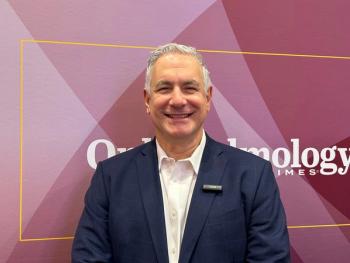
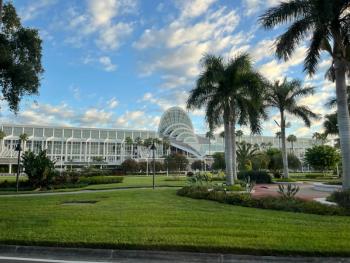
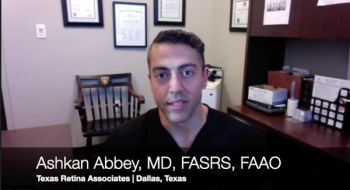
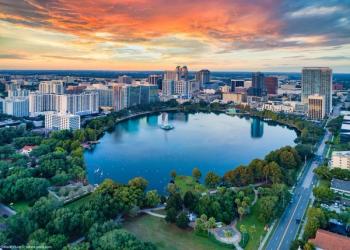















































.png)


